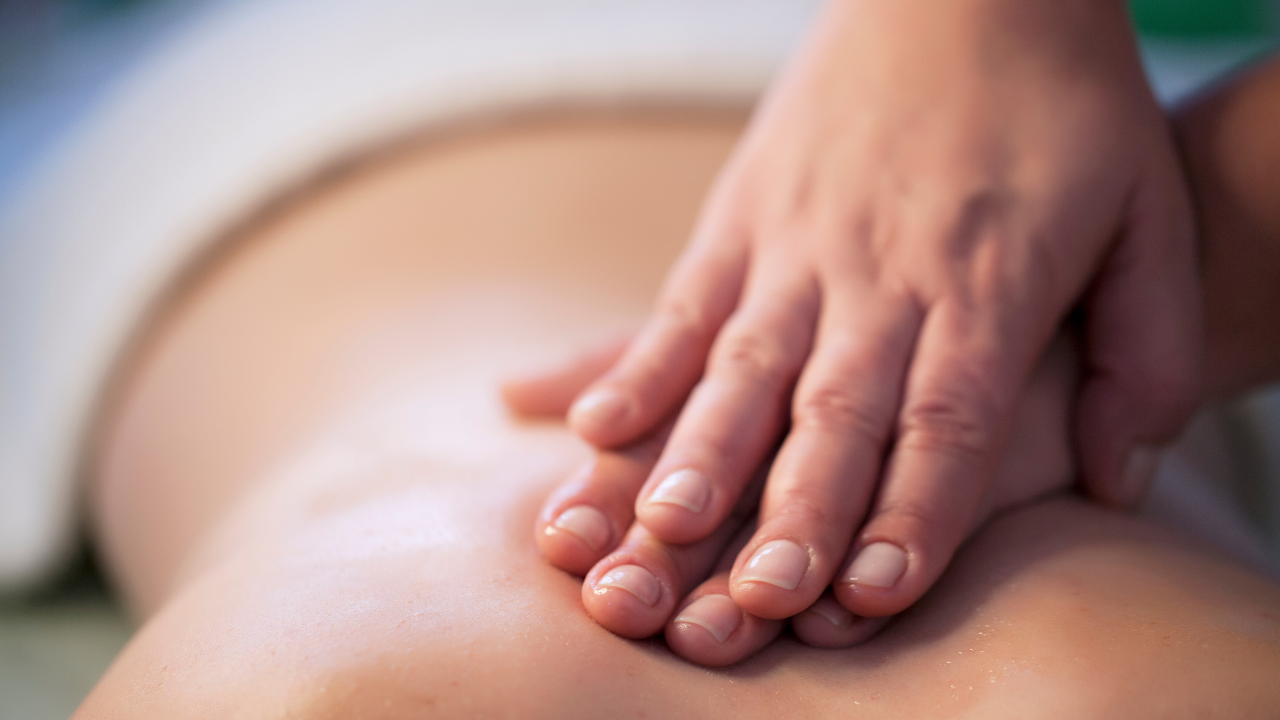Ayurvedic massage is a holistic massage therapy that originated in India over 5,000 years ago. It is based on the principles of Ayurveda, a traditional system of medicine that views the body as a whole and seeks to balance the three doshas: vata, pitta, and kapha.
Ayurvedic massage uses warm herbal oils to promote deep relaxation and healing. The therapist will apply the oils to your skin using long, flowing strokes that are designed to stimulate the flow of prana, or life force energy. The massage may also include specific pressure points and techniques to address specific health concerns.
Ayurvedic massage is a gentle yet effective way to improve your overall health and well-being. It can help to reduce stress, improve circulation, relieve muscle pain, and boost your immune system. It can also help to improve your sleep, skin health, and mood.
If you are looking for a natural way to improve your health and well-being, ayurvedic massage is a great option. It is safe for most people and can be enjoyed by people of all ages.
The benefits of ayurvedic massage

Ayurvedic massage offers a wide range of benefits, both physical and mental. Some of the most common benefits include:
Increased relaxation and stress relief
Ayurvedic massage can help to reduce stress and anxiety by stimulating the release of endorphins, the body's natural pain relievers.Improved circulation and lymphatic drainage
The warm herbal oils used in ayurvedic massage help to improve circulation and lymphatic drainage. This can help to remove toxins from the body and reduce inflammation.Reduced muscle tension and pain
The deep tissue massage techniques used in ayurvedic massage can help to release muscle tension and pain. This can be helpful for people with chronic pain conditions, such as back pain and arthritis.Improved flexibility and range of motion
Ayurvedic massage can help to improve flexibility and range of motion by stretching and releasing tight muscles. This can be helpful for people who are active or who have limited mobility.Enhanced skin health
The warm herbal oils used in ayurvedic massage can help to improve skin health by hydrating and nourishing the skin. This can help to reduce wrinkles and age spots and improve skin tone.Boosted immune system
Ayurvedic massage can help to boost the immune system by stimulating the production of white blood cells.Improved sleep quality
Ayurvedic massage can help to improve sleep quality by reducing stress and anxiety. It can also help to relax the body and mind, making it easier to fall asleep.Increased energy levels
Ayurvedic massage can help to increase energy levels by stimulating the circulation and improving the body's ability to use oxygen. This can be helpful for people who are feeling tired or fatigued.Improved mood and sense of well-being
Ayurvedic massage can help to improve mood and sense of well-being by reducing stress and anxiety. It can also help to boost self-esteem and promote feelings of relaxation and peace.How to choose an ayurvedic massage therapist
 (8).png)
When choosing an ayurvedic massage therapist, it is important to find someone who is qualified and experienced. Look for a therapist who has been trained in traditional Ayurveda and who has a good understanding of the doshas. You should also feel comfortable with the therapist and their approach to massage.
Here are some questions you can ask a potential therapist to help you make a decision:
How long have you been practicing ayurvedic massage?
What is your training in Ayurveda?
What are your specialties?
What do you believe are the benefits of ayurvedic massage?
How do you tailor your massages to individual needs?
Do you have any testimonials from previous clients?
What to expect during an ayurvedic massage
An ayurvedic massage typically lasts for 60-90 minutes. The therapist will begin by taking your pulse and asking you about your health history. They will then use warm herbal oils to massage your body using long, flowing strokes. The massage may also include specific pressure points and techniques to address specific health concerns.
You may feel some discomfort during the massage, especially if you are tense or have any areas of muscle pain. However, the therapist will adjust the pressure of the massage to your comfort level.
The following is a typical sequence of events for an ayurvedic massage:
The therapist will begin by taking your pulse and asking you about your health history. This will help them to determine which doshas are out of balance and which oils and techniques to use.
The therapist will then apply warm herbal oils
The therapist will then begin the massage with long, flowing strokes. These strokes are designed to stimulate the flow of prana, or life force energy.
The therapist may then use specific pressure points and techniques to address specific health concerns. For example, if you have back pain, the therapist may apply pressure to certain points along your spine.
The massage will end with a series of calming strokes. This will help to relax your body and mind.
Here are some of the specific oils and techniques that may be used in an ayurvedic massage:
 (9).png)
Sesame oil
Sesame oil is a traditional oil used in ayurvedic massage. It is rich in fatty acids and vitamins, which can help to nourish the skin and promote healing.Coconut oil
Coconut oil is another popular oil used in ayurvedic massage. It is also rich in fatty acids and vitamins, and it has a warming effect that can help to relax muscles and reduce pain.Mustard oil
Mustard oil is a warming oil that can be helpful for people with vata dosha.Herbal oils
Herbal oils can be added to the massage oil to target specific health concerns. For example, if you have arthritis, the therapist may add ginger or turmeric oil to the massage oil.The specific techniques used in an ayurvedic massage will vary depending on the therapist's training and the client's individual needs. However, some of the most common techniques include:
Shirodhara
Shirodhara is a technique in which warm oil is poured slowly and steadily over the forehead. It is said to have a calming and meditative effect.Marma therapy
Marma therapy is a form of ayurvedic massage that focuses on specific points on the body called marmas. These points are said to be connected to the flow of prana, and stimulating them can help to improve health and well-being.Preparation for an ayurvedic massage
 (10).png)
There are a few things you can do to prepare for an ayurvedic massage
Eat a light meal before the massage. This will help to prevent nausea.Avoid caffeine and alcohol before the massage.
Wear loose, comfortable clothing. This will allow the therapist to massage your body freely.
Arrive at the spa early so you can relax and clear your mind.
Aftercare for an ayurvedic massage
Here are a few things you can do after an ayurvedic massage:
Drink plenty of water.
Avoid strenuous activity for a few hours.
Get a good night's sleep. This will help your body to heal and rejuvenate.
Eat a healthy meal. This will nourish your body and replenish your energy levels.
Disclaimer
This blog post is for informational purposes only and is not intended to be a substitute for medical advice. If you have any health concerns, please consult with a doctor or other qualified healthcare provider.

 (6).png)


